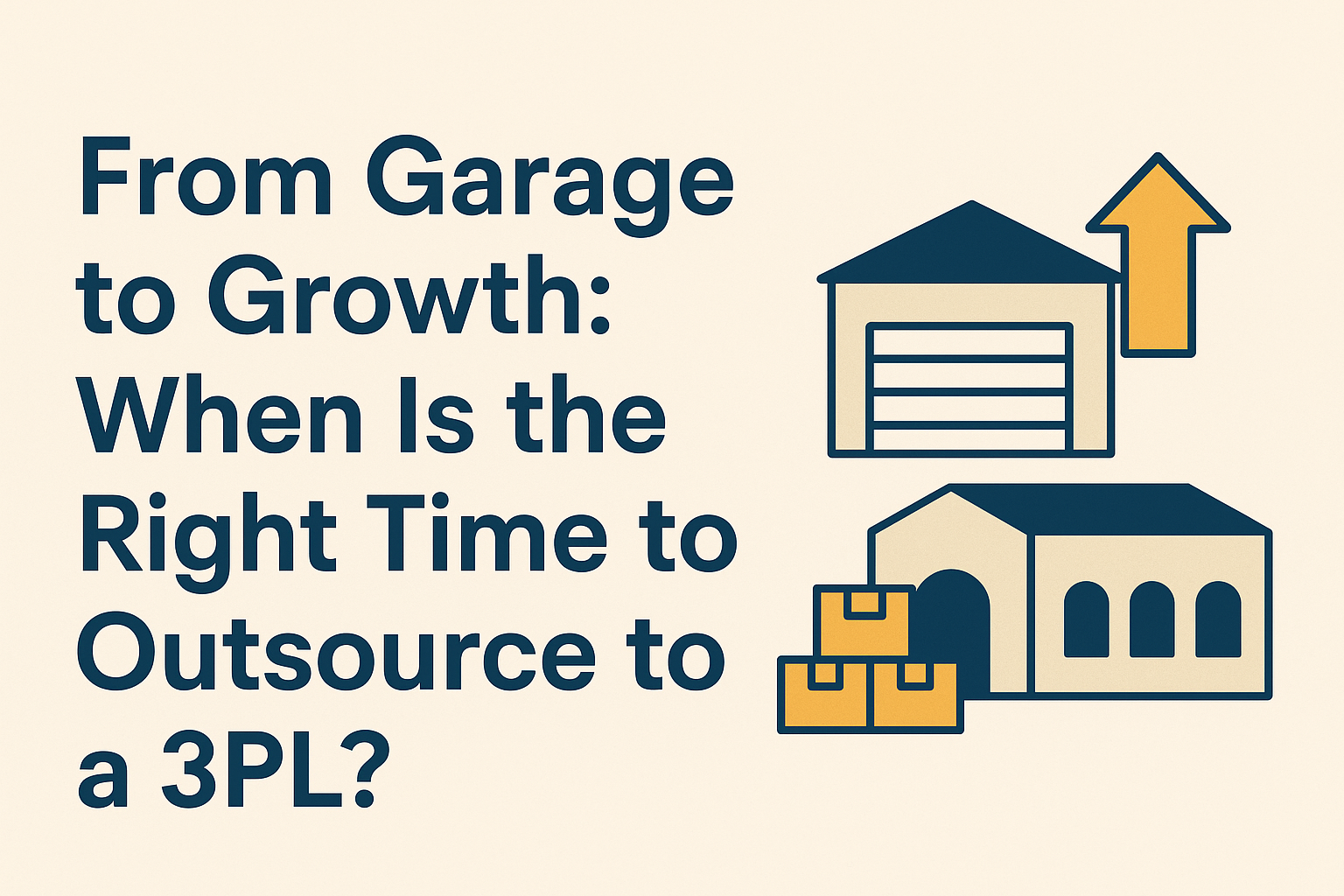Beyond LATAM: Unlocking Southeastern US Efficiency with a Miami Warehouse
Miami, Florida, often conjures images of vibrant culture, beautiful beaches, and its undeniable role as the gateway to Latin America (LATAM). While its strategic importance for international trade with Central and South America is well-documented, many e-commerce businesses overlook a equally critical advantage: a **Miami warehouse’s unparalleled ability to optimize shipping costs and speed for the entire Southeastern United States**. For brands targeting the lucrative markets of Florida, Georgia, the Carolinas, and beyond, a Miami fulfillment center isn’t just an option; it’s a strategic imperative.
If you’re currently serving the Southeast from a distant warehouse, you’re likely battling high shipping costs, extended transit times, and potentially frustrated customers. This extensive guide will delve into why leveraging a Miami fulfillment center, like those offered by WarehouseTX, can revolutionize your logistics, reduce your operational expenses, and significantly enhance customer satisfaction across the vital Southeastern U.S. market.
—
The Southeastern Advantage: Miami’s Strategic Geographical Position
Miami’s unique geographical placement makes it a logistical powerhouse, not only for international trade but crucially for domestic distribution within the Southeastern U.S.
Proximity to Major Southeastern Markets
- **Florida’s Vast Market:** Miami offers direct, rapid access to Florida’s nearly 23 million residents, including major cities like Orlando, Tampa, and Jacksonville. This translates to 1-day ground shipping for a significant portion of the state.
- **Georgia & The Carolinas:** Key markets like Atlanta, Charlotte, Raleigh, and Charleston are all within 1-2 day ground shipping from a Miami hub, providing a competitive edge in speed.
- **Gulf Coast & Beyond:** States like Alabama, Mississippi, and even parts of Tennessee are also within economical 2-3 day ground shipping ranges.
This concentrated reach ensures that your products can hit a vast percentage of the Southeastern population quickly and affordably.
Unrivaled Port and Airport Connectivity
Beyond its domestic reach, Miami’s status as a major international hub directly benefits domestic distribution:
- **PortMiami:** As one of the largest and busiest ports in the U.S., PortMiami handles significant cargo volumes, particularly from LATAM, Europe, and increasingly, Asia (via the expanded Panama Canal). Having a warehouse nearby means expedited drayage and quicker inventory intake for imported goods.
- **Miami International Airport (MIA):** MIA is one of the busiest cargo airports in the world, facilitating rapid air freight for expedited shipments or high-value goods, further enhancing supply chain flexibility.
- **Robust Highway Network:** Miami is well-connected by major interstates (I-95, Florida Turnpike), ensuring efficient ground transportation throughout the state and up the East Coast.
This robust multi-modal infrastructure supports swift inbound logistics for your inventory and efficient outbound shipping to your customers.
—
The Cost-Efficiency Equation: Saving Big on Southeastern Shipping
One of the most compelling reasons to choose a Miami warehouse for Southeastern distribution is the dramatic impact on shipping costs.
Reducing Shipping Zones and Costs
Shipping costs are heavily influenced by “shipping zones,” which represent geographical distance from the origin. The fewer zones a package crosses, the lower the cost. A Miami warehouse places your inventory directly within low-cost shipping zones for the entire Southeast:
- **Florida:** Primarily Zone 1-2 from Miami.
- **Georgia/Carolinas:** Primarily Zone 2-3 from Miami.
- **Lower Zones = Lower Prices:** This directly translates to significant savings on last-mile delivery costs via ground shipping, compared to fulfilling from a Midwest or West Coast location.
Minimizing Freight Expenses
For inbound inventory, especially if importing from Latin America or even other parts of the U.S. that use sea freight, having a Miami warehouse reduces inland freight (drayage) costs from the port. This adds up, especially for large or frequent shipments.
Case Study: The Sporting Goods Distributor
A national sporting goods distributor was fulfilling all orders from a centralized warehouse in the Midwest. While effective for overall national reach, they noticed that their largest growing customer base was in Florida and the Southeast. Shipping sports equipment (often bulky or heavy) from the Midwest resulted in high parcel and LTL costs, and delivery times were consistently 4-6 days.
By opening a second distribution hub with a **Miami fulfillment center**, they achieved:
- **25% Reduction in Shipping Costs:** For all Southeastern orders, due to lower shipping zones.
- **Accelerated Delivery:** Orders reaching Florida and Georgia in 1-2 days.
- **Improved Customer Satisfaction:** Fewer complaints about shipping speed and cost.
- **Increased Sales:** The competitive advantage of faster, cheaper shipping led to a significant boost in sales from the region.
This move allowed them to allocate resources more efficiently and provide superior service to a key growth market.
—
Beyond Cost: The Strategic Benefits of Miami Fulfillment
While cost savings are a powerful motivator, a Miami fulfillment center offers a host of other strategic advantages that contribute to overall business growth and operational excellence.
Faster Delivery Times: Meeting Customer Expectations
In today’s e-commerce landscape, speed is king. Consumers expect rapid delivery, and a Miami warehouse enables you to meet and exceed those expectations for Southeastern customers.
- **Competitive Edge:** Outpace competitors who are shipping from further away.
- **Reduced Cart Abandonment:** Shorter estimated delivery times boost conversion rates.
- **Enhanced Customer Loyalty:** Consistent, fast delivery builds trust and encourages repeat purchases.
Improved Inventory Management and Supply Chain Resilience
Having a regional hub in Miami enhances your ability to manage inventory effectively and respond to market demands or disruptions.
- **Distributed Inventory:** Reduces reliance on a single point of failure, improving supply chain resilience against unforeseen events (e.g., weather, labor strikes).
- **Optimized Stock Levels:** Allows for more precise inventory allocation based on regional demand, reducing overstocking or stockouts.
- **Faster Replenishment:** Quick access to ports and major transportation routes means faster inbound replenishment of inventory to the Miami facility.
Seamless B2B & Retail Distribution
Miami’s robust logistics infrastructure is not just for DTC (Direct-to-Consumer) shipments. It’s also ideal for B2B (Business-to-Business) operations, especially if you sell to retailers or distributors in the Southeast.
- **Efficient Store Deliveries:** Rapid and cost-effective delivery to retail locations throughout Florida, Georgia, and the Carolinas.
- **Reduced Lead Times for Wholesale:** Expedited replenishment for your wholesale partners in the region, strengthening business relationships.
- **Specialized Services:** Many Miami 3PLs offer value-added services like kitting, bundling, and specific retail compliance labeling (EDI integration) crucial for B2B.
—
Comparative Analysis: Miami vs. Other Fulfillment Hubs for Southeastern Reach
To truly highlight Miami’s unique position, let’s compare its effectiveness for Southeastern distribution against other common fulfillment locations.
Midwest Fulfillment (e.g., Ohio, Iowa)
| Factor | Miami Fulfillment (for SE U.S.) | Midwest Fulfillment (for SE U.S.) |
|---|---|---|
| **Delivery Speed to SE** | 1-2 days (Florida, Georgia, Carolinas) | 3-4 days (Florida, Georgia, Carolinas) |
| **Shipping Costs to SE** | Lower (Zone 1-3) | Higher (Zone 4-5) |
| **Proximity to FL Markets** | Direct, 1-day ground | Distant, 3+ days ground |
| **Proximity to LATAM Imports** | Direct access to PortMiami/MIA | Requires significant inland freight from other ports |
While a Midwest location offers good national coverage, it sacrifices speed and increases costs significantly for the highly concentrated Southeastern market. The added transit time from a central location often negates any perceived “centrality” for this specific region.
East Coast Fulfillment (e.g., New Jersey, Virginia)
| Factor | Miami Fulfillment (for SE U.S.) | East Coast Fulfillment (for SE U.S.) |
|---|---|---|
| **Delivery Speed to SE** | 1-2 days (Florida, Georgia, Carolinas) | 2-3 days (Georgia, Carolinas), 3-4 days (Florida) |
| **Shipping Costs to SE** | Lower (Zone 1-3) | Moderate to High (Zone 3-5) |
| **Proximity to FL Markets** | Direct, 1-day ground | More distant, 3+ days ground for southern Florida |
| **Proximity to LATAM Imports** | Direct access to PortMiami/MIA | Limited direct access, potentially longer shipping lanes |
Even other East Coast hubs, while suitable for the Northeast, face challenges reaching deep into the Southeast, particularly Florida. Miami’s position ensures a faster, more economical reach to the entire peninsula and surrounding states.
—
Choosing Your Miami Fulfillment Partner: Key Considerations
Selecting the right 3PL is paramount to capitalizing on Miami’s logistical advantages. Here’s what to look for:
- **Expertise in Southeast Logistics:** Ensure they have a proven track record of efficient and cost-effective distribution within Florida and the wider Southeast.
- **Port/Airport Proximity:** Confirm their facility’s proximity to PortMiami and MIA for expedited inbound processing of imported goods.
- **Advanced Technology:** A robust Warehouse Management System (WMS) with real-time inventory tracking, seamless e-commerce platform integrations, and transparent reporting is essential.
- **Scalability:** Can they effortlessly handle your current volume and scale up to accommodate seasonal peaks or significant growth without compromising service?
- **Value-Added Services:** Do they offer kitting, bundling, returns management, or specialized handling (e.g., cold storage) if your products require it? Explore comprehensive fulfillment services.
- **Transparent Pricing:** A clear, predictable pricing structure without hidden fees is crucial for budget planning.
A partnership with a reputable provider like WarehouseTX ensures you’re leveraging Miami’s full potential for your e-commerce growth in the Southeast.
—
Final Thoughts: Miami as Your Southeast Fulfillment Cornerstone
While Miami’s global reputation as a gateway to Latin America is well-deserved, its often-underestimated role as a premier domestic fulfillment hub for the Southeastern U.S. presents an extraordinary opportunity for e-commerce brands. The combination of its strategic geographical location, robust transportation infrastructure, and inherent cost advantages makes a **Miami warehouse** an indispensable asset for any business serious about serving the booming markets of Florida, Georgia, and the Carolinas efficiently and affordably.
By choosing a Miami fulfillment partner, you’re not just optimizing your shipping; you’re investing in faster delivery times, reduced operational costs, enhanced customer satisfaction, and a more resilient, scalable supply chain. Don’t let your products get bogged down by distant logistics. Embrace the power of proximity and make Miami your strategic cornerstone for unparalleled success in the Southeastern U.S.
Ready to unlock faster, more cost-effective shipping to the Southeast U.S.? Contact WarehouseTX today for a personalized quote and discover how our Miami fulfillment services can transform your logistics strategy and drive your e-commerce growth.
—
Frequently Asked Questions About Miami Fulfillment Centers
Q: Is a Miami warehouse only good for Latin American shipping?
No. While Miami is indeed a major gateway to Latin America, it is also strategically vital for domestic shipping within the entire Southeastern U.S. Its location significantly reduces shipping costs and transit times to Florida, Georgia, the Carolinas, and other surrounding states, making it an excellent hub for domestic e-commerce fulfillment.
Q: How does a Miami fulfillment center reduce shipping costs to the Southeast?
A Miami warehouse reduces shipping costs primarily by minimizing the number of shipping zones packages cross for Southeastern deliveries. Shorter distances mean lower rates from major carriers for ground shipping to Florida (Zone 1-2), Georgia, and the Carolinas (Zone 2-3), resulting in significant savings compared to shipping from a more centralized or distant location.
Q: What are the typical delivery times from Miami to Southeastern U.S. cities?
For most major cities in Florida (e.g., Orlando, Tampa, Jacksonville), delivery times are typically 1 business day via ground shipping. For Georgia (e.g., Atlanta) and the Carolinas (e.g., Charlotte, Raleigh), 1-2 business days is common. This speed is crucial for meeting modern customer expectations.
Q: Can a Miami warehouse handle B2B (wholesale) and DTC (direct-to-consumer) fulfillment?
Yes, many Miami fulfillment centers are equipped to handle both B2B and DTC orders. They have the infrastructure, technology, and operational expertise to manage both high-volume individual shipments and larger, often more complex, wholesale orders to retail partners or distributors within the Southeast and beyond.
Q: Is Miami a good location for importing goods from Europe or Asia?
Miami is an excellent location for importing goods, especially from Europe and Latin America, due to PortMiami’s extensive shipping lanes and Miami International Airport’s robust cargo operations. While Asian imports traditionally favored West Coast ports, the expanded Panama Canal has made East Coast ports, including Miami, increasingly viable for Asian cargo, reducing inland transit times for goods destined for the Southeast.

